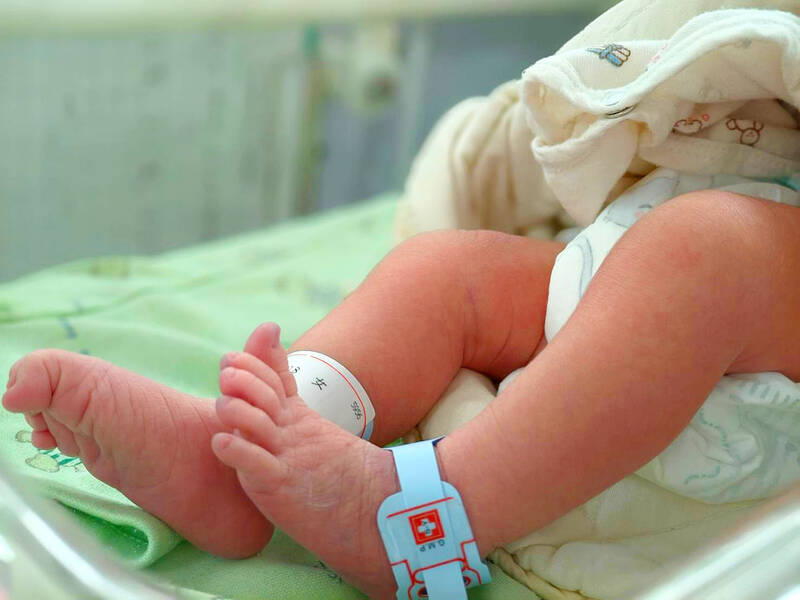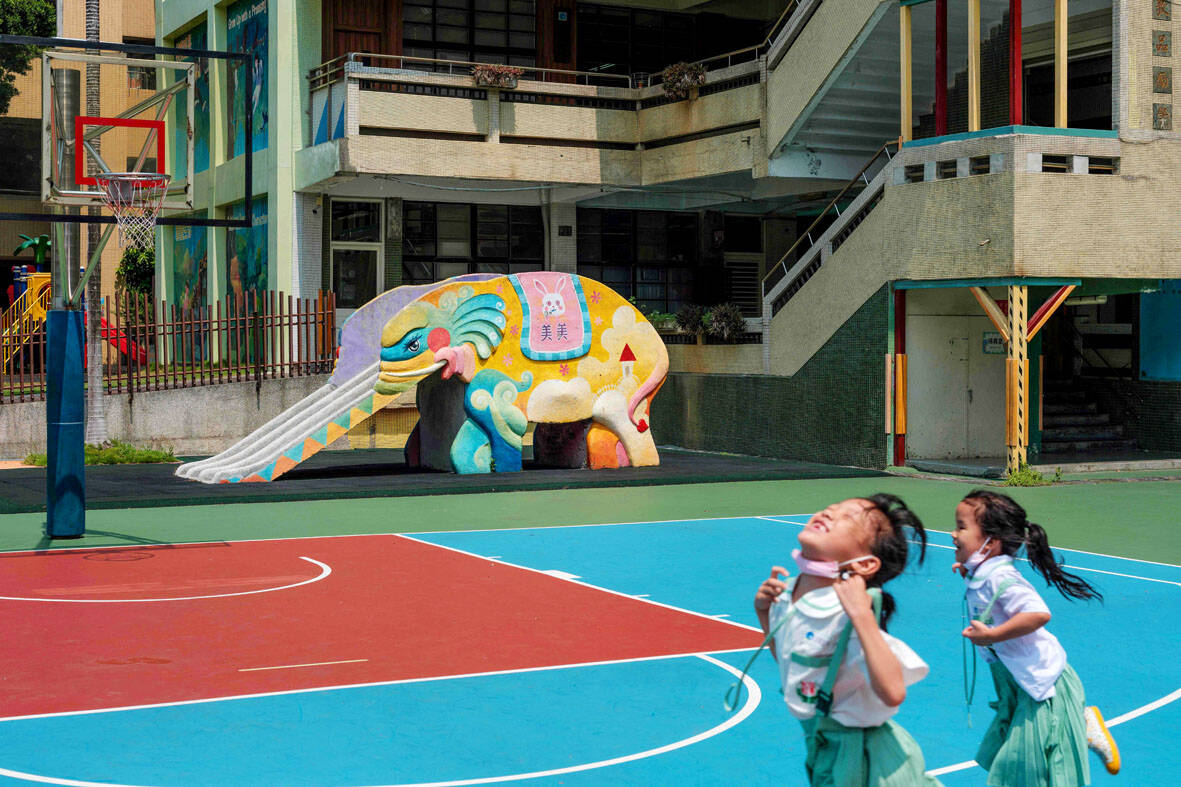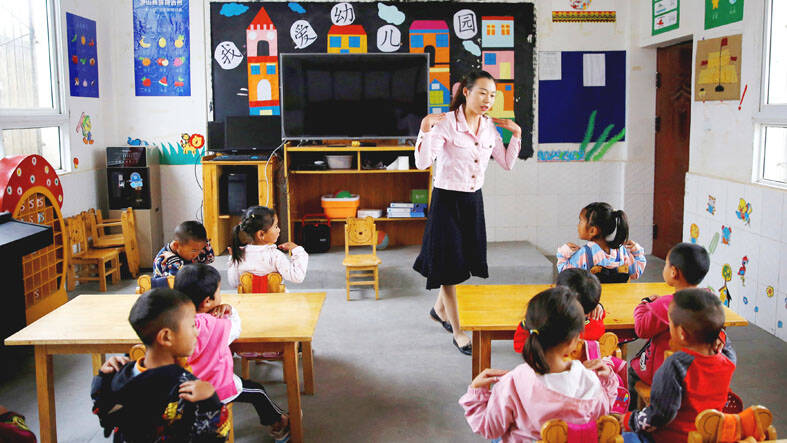Famed Chinese demographer Yi Fuxian (易富賢) recently wrote for The Diplomat on the effects of a cross-strait war on demography. He contended that one way to deter the People’s Republic of China (PRC) is by putting the demographic issue front and center — last year total births in the PRC, he said, receded to levels not seen since 1762.
Yi observes that Taiwan’s current fertility rate is already lower than Ukraine’s — a nation at war that is refusing to send its young into battle — and that its “demographic crisis suggests that Taiwan’s technological importance will rapidly decline, and its defense will become increasingly dependent on the United States.”
He notes that low-fertility countries face slumping innovation, because of the lack of young people to staff and grow their technology industries. It is not difficult to read into Yi’s analysis and see that Taiwan has already peaked.

Photo courtesy of Changhua Christian Hospital
But Yi goes on, relentlessly. Occupation of Taiwan by the PRC would have effects similar to its occupation of Hong Kong: declining birth rates and population flight. With Taiwan, the effects would be much worse, as the effects of sluggish population growth would likely precede PRC occupation. The PRC’s population too is in decline, and it’s likely that a young person reading these words will live long enough to see the US host a larger population than the PRC.
Nor would the effects be limited to the nations involved. Yi says that economic dislocations, including inflation, caused by Russia’s invasion of Ukraine reverberated across Europe, lowering birth rates in Poland and Germany. The PRC will export whatever economic problems it incurs, and it is one of the world’s leading trading economies.
But here in Taiwan we are so advanced, we don’t even need a war to achieve these effects.

Photo: AFP
TAIWAN IN TROUBLE
The Taipei Times dolefully reported last week that the birth rate likely continued to fall last year. As of November, there were 122,360 births, government numbers showed. That means we can expect 135,000 or so births for last year, down from 135,571 in 2023 and 138,986 births in 2022.
Statista.com says that Taiwan had roughly 2,600 elementary schools in 2023. Simple math shows that in just five years there will be 50 kids in the entering class for each elementary school in 2029 to 2030. In the late 1980s I worked near the famed elementary school in New Taipei’s Yonghe (永和區) that had over 11,000 children enrolled. That figure is not far from 10 percent of the current entering kindergarten class for the entire nation. Another way to look at it: the seven years from 2011 to 2017 saw over 350,000 more children born than the seven years from 2018 to last year.

Photo: Reuters
Low birth rates last year led to the closure of nine elementary schools. Eight high schools stopped accepting new admissions, indicating that they too will close soon. This is only first blood.
In the next decade thousands of teachers and administrators are going to lose their jobs. Similar numbers of associated street vendors, shops, transportation jobs and cram school jobs will disappear. The effects will ripple across every small industry, from printers to sign makers to health clinics. Few of those workers and small business owners will have the skills to switch to some other industry. No doubt developers will be delighted when large tracts of urban land become available as schools close, so they can build more of the apartment towers that are choking the life out of Taiwan’s birth rates.
The political effects of such changes will dwarf the silly protest vote last year that handed the legislature to the pro-China parties. Recall that the die-off of small businesses during the recent pandemic was a major factor in the national shift away from the Democratic Progressive Party (DPP). Many looked to the Taiwan People’s Party (TPP) to save them in the last election. Will they be looking to the PRC in five years? In 10?
Moreover, if we project that population collapse forward, of the 135,000 estimated births last year, half are male. That suggests a pool of just 67,000 males at 18 years of age for conscription in 2042 (for the 7 years from 2018 to last year, it is just 550,000 men).
Another 67,000 females will reach their prime productive years. At the nation’s current total fertility rate (TFR) of roughly 0.8, those women will birth just 53,600 babies in their lifetimes. At present females under 15 number 1,346,275. They can be expected to have 1.08 million children. We are already desperately short of labor across all sectors.
Recall that birth rates are slowly falling. There is plenty of room to fall: the interiors of some South Korean cities are at 0.5 TFR and still plummeting.
The government has repeatedly warned that the population will drop below 15 million by 2070, yet it makes no fundamental changes. But the things I just described will largely take place before 2050.
The reader may be moved to protest that women can have children into their early 40s. However, the 2023 study “Age and Infertility: Revisited” found that the ability of a woman to get pregnant peaks at 20 and plummets by two-thirds after 33. Many of the women putting off births into their 30s will never have children. We are not in a birth rate “crisis.” We are awakening in a house that is already in flames.
President William Lai’s (賴清德) administration has already promulgated a policy making dual-income families with two children aged six or younger with an annual income of NT$1,461,000 (US$44,400) or less exempt from paying income tax. This will likely have very little effect, as in other countries where such approaches have been tried.
Indeed, the government implemented policies to promote births beginning in 2018. In 2021, then premier Su Tseng-chang (蘇貞昌) announced NT$85 billion in subsidies to be implemented by 2023, and the government’s monthly child support subsidy would rise from NT$3,500 to NT$5,000.
In July the Lai government announced its upgraded national childcare policy for children aged up to six. This policy upgraded measures such as enlarging affordable education and care service capacities, increasing child care subsidies and creating more preschool classes dedicated to enrolling two-year-olds. These too will surely fail, as they have wherever they have been tried.
We are now six years into various programs offering an ever-growing pile of financial incentives to have children, and total births have fallen every year.
Time to address things like turning apartment towers into single-family homes, encouraging remote work, improving boss culture, salaries and working hours, creating walkable cities and promoting pro-natal beliefs and values.
Otherwise, things will end not with a bang, but with a whimper — unheard — of the babies who were never born.

Most heroes are remembered for the battles they fought. Taiwan’s Black Bat Squadron is remembered for flying into Chinese airspace 838 times between 1953 and 1967, and for the 148 men whose sacrifice bought the intelligence that kept Taiwan secure. Two-thirds of the squadron died carrying out missions most people wouldn’t learn about for another 40 years. The squadron lost 15 aircraft and 148 crew members over those 14 years, making it the deadliest unit in Taiwan’s military history by casualty rate. They flew at night, often at low altitudes, straight into some of the most heavily defended airspace in Asia.

Taiwan’s democracy is at risk. Be very alarmed. This is not a drill. The current constitutional crisis progressed slowly, then suddenly. Political tensions, partisan hostility and emotions are all running high right when cool heads and calm negotiation are most needed. Oxford defines brinkmanship as: “The art or practice of pursuing a dangerous policy to the limits of safety before stopping, especially in politics.” It says the term comes from a quote from a 1956 Cold War interview with then-American Secretary of State John Foster Dulles, when he said: ‘The ability to get to the verge without getting into the war is

Like much in the world today, theater has experienced major disruptions over the six years since COVID-19. The pandemic, the war in Ukraine and social media have created a new normal of geopolitical and information uncertainty, and the performing arts are not immune to these effects. “Ten years ago people wanted to come to the theater to engage with important issues, but now the Internet allows them to engage with those issues powerfully and immediately,” said Faith Tan, programming director of the Esplanade in Singapore, speaking last week in Japan. “One reaction to unpredictability has been a renewed emphasis on

Beijing’s ironic, abusive tantrums aimed at Japan since Japanese Prime Minister Sanae Takaichi publicly stated that a Taiwan contingency would be an existential crisis for Japan, have revealed for all the world to see that the People’s Republic of China (PRC) lusts after Okinawa. We all owe Takaichi a debt of thanks for getting the PRC to make that public. The PRC and its netizens, taking their cue from the Chinese Communist Party (CCP), are presenting Okinawa by mirroring the claims about Taiwan. Official PRC propaganda organs began to wax lyrical about Okinawa’s “unsettled status” beginning last month. A Global